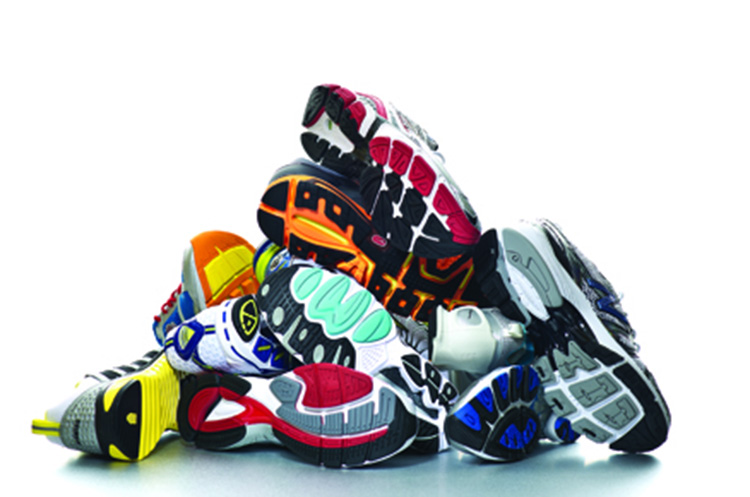Theisen D, Malisoux L, Genin J, Delattre N, Seil R, Urhausen A.
Sports Medicine Research Laboratory, Public Research Centre for Health, , Luxembourg, Grand-Duchy of Luxembourg.
BACKGROUND:
In this double-blind randomised controlled trial, we tested if leisure-time runners using shoes with less compliant midsoles have a higher running-related injury (RRI) risk.
METHOD:
We provided 247 runners with standard running shoes having either a soft study shoes (soft-SS) or a hard study shoes (hard-SS)midsole and followed them prospectively for 5 months regarding RRI. All information about sports practice and injuries was uploaded on a dedicated internet platform and checked for consistency and completeness. RRI was defined as any first-time pain sustained during or as a result of running practice and impeding normal running activity for at least 1 day. Cox proportional hazards regressions were used to identify RRI riskfactors.
RESULT:
The type of study shoes used for running was not associated with RRIs (HR=0.92; 95% CI 0.57 to 1.48). The hard-SS had a 15% greater overall stiffness in the heel region. The two study groups were similar regarding personal and sports participation characteristics, except for years of running experience, which was higher (p<0.05) in the hard-SS group. Global RRI incidence was 12.1 RRI/1000 h of running. No between-group differences were found regarding injury location, type, severity or category. Nevertheless, the adjusted regression model revealed positive associations with RRI risk for body mass index (HR=1.126; 95% CI 1.033 to 1.227), previous injury (HR=1.735; 95% CI 1.037 to 2.902) and mean session intensity (HR=1.396; 95% CI 1.040 to 1.874). Protective factors were previous regular running activity (HR=0.422; 95% CI 0.228 to 0.779) and weekly volume of other sports activities (HR=0.702; 95% CI 0.561 to 0.879).
CONCLUSIONS:
Midsole hardness of modern cushioned running shoes does not seem to influence RRI risk.
KEYWORDS: Injury Prevention; Running; Running shoes; Sporting injuries
Br J Sports Med. 2014 Mar;48(5):371-6. doi: 10.1136/bjsports-2013-092613. Epub 2013 Sep 16.









